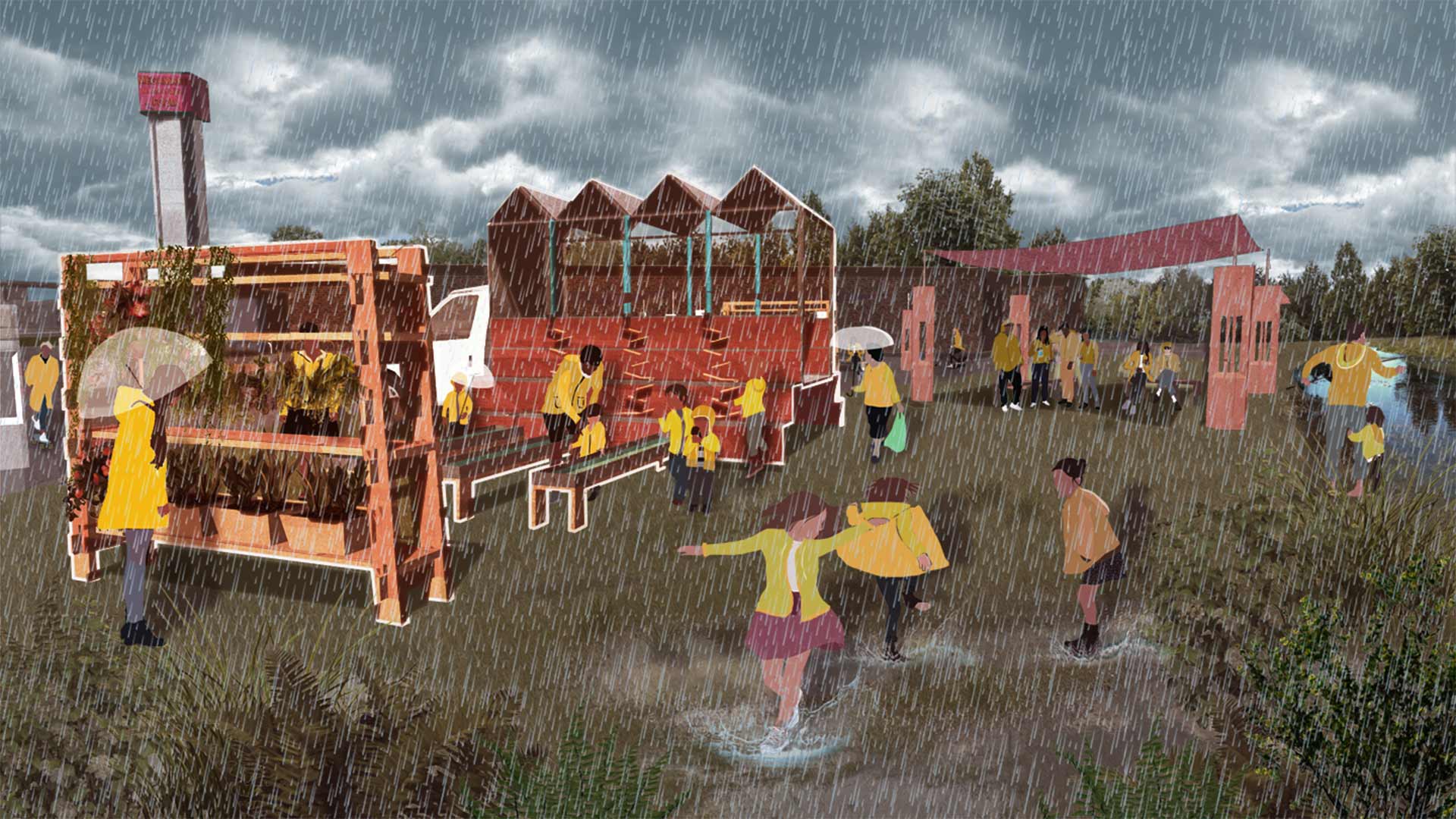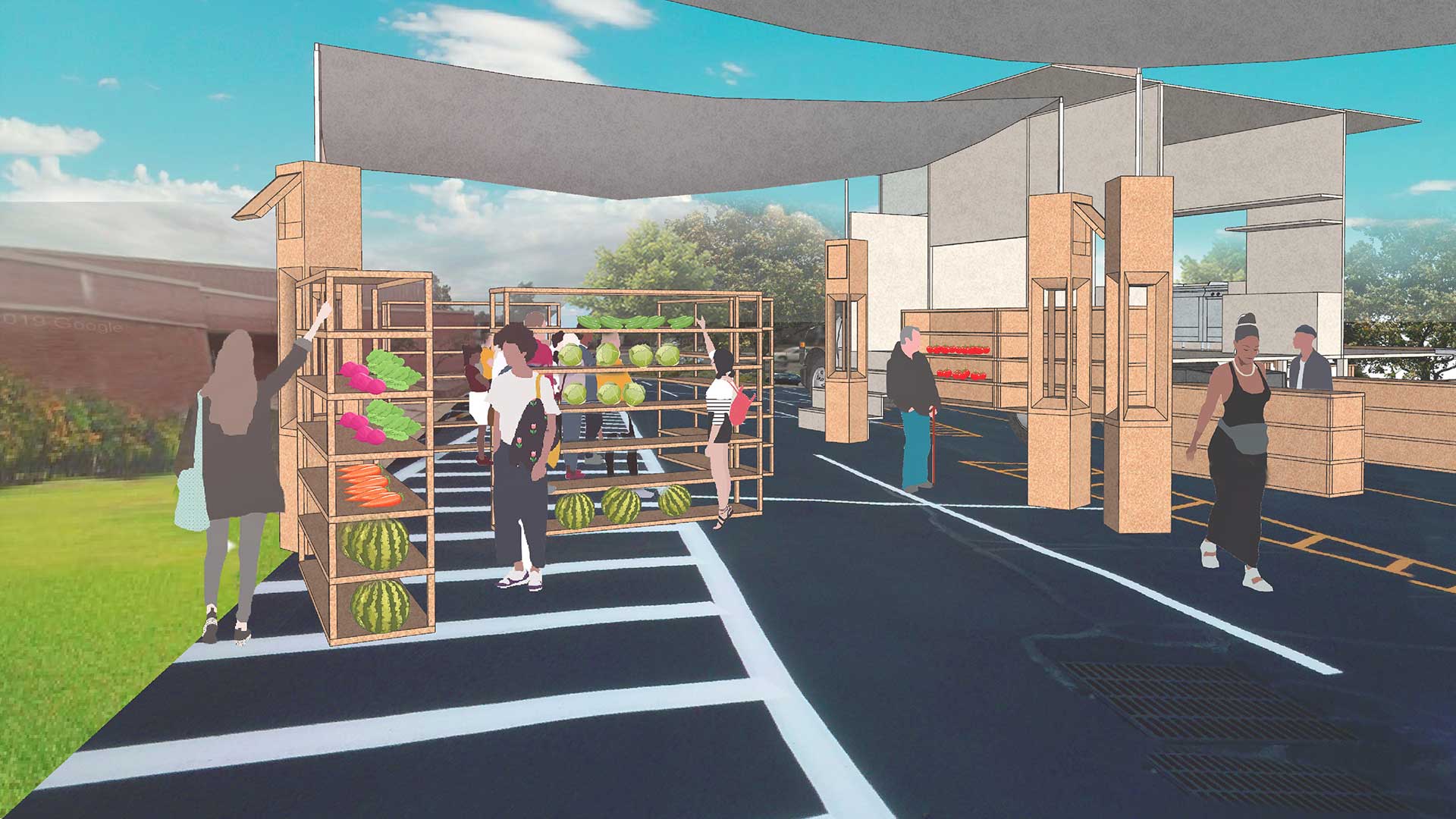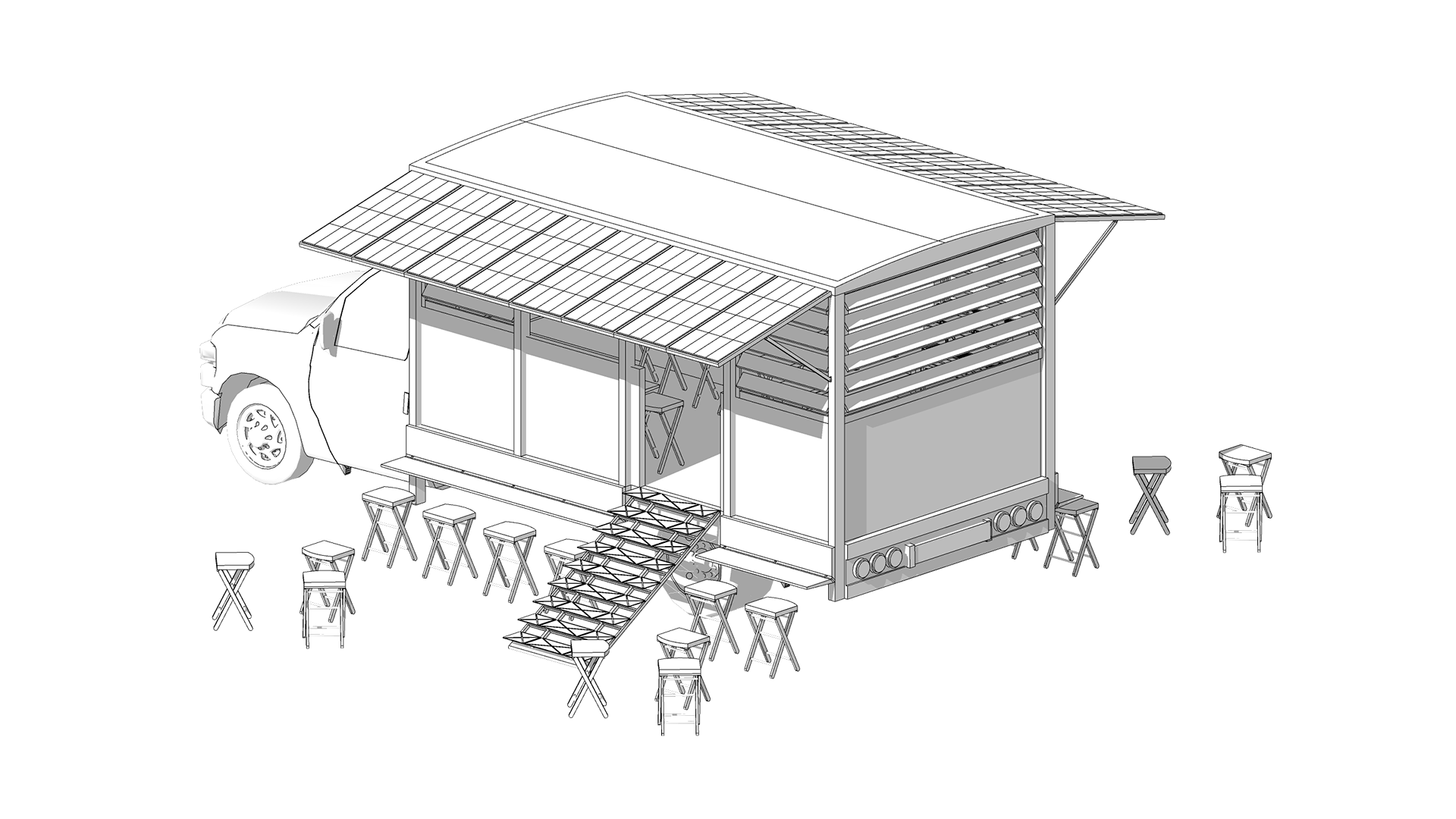- June 15, 2020
- By Maggie Haslam
What if you could get a glimpse of a community’s future by quickly transforming an empty parking lot into a safe space to play? Or by claiming a street corner for a pop-up community kitchen stocked with locally grown vegetables? What if a roving internet café offered a prelude to a permanent neighborhood spot?
Those are some of the questions that inspired a new University of Maryland student- and community-driven project: souped-up vans that travel about and become instant gathering spaces, delivering critical resources and connection.
Called mobile resource hubs, the concept emerged from “Making Place,” a spring architecture design studio led by Professor of Architecture Ronit Eisenbach and Allie O’Neill, program manager of the local nonprofit Neighborhood Design Center. The project was inspired by a larger effort to engage and support the culturally rich communities nestled along the future tracks of Maryland’s light-rail Purple Line. Students were challenged to devise temporary installations that celebrated a community’s spirit, while sparking conversations around future change.
“When a major project comes to a community, it presents a lot of challenges and uncertainty, but also opportunities, which frankly can be overwhelming,” said Eisenbach, who is also director of the National Center for Smart Growth’s Creative Placemaking Collaborative. “Placemaking through temporary installations and programming can help anchor a community by highlighting what it has to offer and test out ideas, setting the stage for long-term transformations.”
 After exploring ideas for six community stops along the Purple Line, students teamed up with community leaders, organizations and designers to create a vision for Greater Riverdale, an enclave just minutes from campus. The mobile resource hubs were one response to goals captured in the Greater Riverdale Action Plan led by the Neighborhood Design Center and the Central Kenilworth Avenue Revitalization CDC, part of a place-based initiative with Kaiser Permanente. After-school programming, access to healthy food, safety and walkability, internet access and civic space were all needs that the community identified as critical for a healthier and more stable future.
After exploring ideas for six community stops along the Purple Line, students teamed up with community leaders, organizations and designers to create a vision for Greater Riverdale, an enclave just minutes from campus. The mobile resource hubs were one response to goals captured in the Greater Riverdale Action Plan led by the Neighborhood Design Center and the Central Kenilworth Avenue Revitalization CDC, part of a place-based initiative with Kaiser Permanente. After-school programming, access to healthy food, safety and walkability, internet access and civic space were all needs that the community identified as critical for a healthier and more stable future.
A Kaiser Permanente Health Van was already available to provide services to residents; what was not was adequate seating for waiting patients outside the van. O’Neill suggested the students start there.
The students quickly devised an idea for flat-pack furniture: a kit of parts that can quickly notch together without screws or nails to create a variety of configurations. “From there, we were thinking, where else can this idea lead us?” said Thomas Michael Mattson, a senior who oversaw the modular furniture for the project. After learning that Greater Riverdale had no community center for recreation, Wi-Fi or community events, the team came up with a plan to bring those functions to the people.
 The result is four themed mobile resource hubs that unfold and modularize to offer an internet cafe, a food pantry, a library and a recreation play space. The food hub provides healthy foods as well as an educational component for growing and cooking. The play hub transforms into climbing walls, benches and monkey bars. The library, a bookmobile on steroids, has all the trappings of an open-air book nook with programming for kids and seniors. The internet café offers a place to socialize or study and free Wi-Fi. All of the vans included gathering spaces outfitted with the students’ furniture.
The result is four themed mobile resource hubs that unfold and modularize to offer an internet cafe, a food pantry, a library and a recreation play space. The food hub provides healthy foods as well as an educational component for growing and cooking. The play hub transforms into climbing walls, benches and monkey bars. The library, a bookmobile on steroids, has all the trappings of an open-air book nook with programming for kids and seniors. The internet café offers a place to socialize or study and free Wi-Fi. All of the vans included gathering spaces outfitted with the students’ furniture.
“It’s not a permanent solution, but a temporary pathway to larger change and hopefully a spark to ignite community leaders to push for these resources,” said senior Alex Hall. “Especially during the pandemic, we’ve seen how hard it is to access things like healthy food.”
This is the second year Eisenbach has taught a creative placemaking-focused design studio; last year, students devised plans for a community center in Haiti in collaboration with the UMD student group Roots Home and Abroad.
 In addition to the mobile hubs, the studio helped advance two other worthy ideas for Riverdale. Sarvis Empowerment Café, a crowd-sourced community dining spot that doubles as a space for community events and exhibitions, is currently under construction; its health and wellness programming is being created in collaboration with Professor Stephen B. Thomas and his Human Centered Design students at the School of Public Health. A digital collection of renderings will help the community envision impact on a larger scale, such as new bike lanes, walkability and permanent gathering spaces.
In addition to the mobile hubs, the studio helped advance two other worthy ideas for Riverdale. Sarvis Empowerment Café, a crowd-sourced community dining spot that doubles as a space for community events and exhibitions, is currently under construction; its health and wellness programming is being created in collaboration with Professor Stephen B. Thomas and his Human Centered Design students at the School of Public Health. A digital collection of renderings will help the community envision impact on a larger scale, such as new bike lanes, walkability and permanent gathering spaces.
Prince George’s County Council member Danielle Glaros, who sat in on a virtual presentation in early May, saw immediate opportunities to apply the students’ ideas, particularly the modular furniture.
“We’ve been doing a lot of work in Riverdale during the pandemic,” she said. “We’re delivering thousands of meals to families but have been battling the elements the past month and a half. So, these opportunities for shade and shelter and seating are really essential.”
